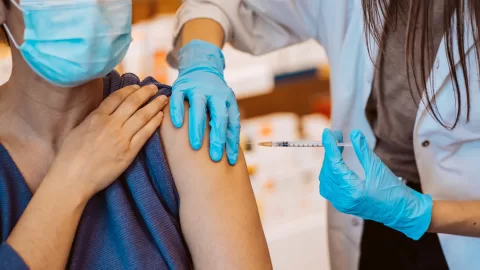Creutzfeldt-Jakob Disease (CJD) is a rare and devastating neurodegenerative disorder that primarily affects older adults, leading to severe cognitive decline and ultimately fatal outcomes. This condition is a result of toxic prion proteins that cause brain damage, presenting several alarming symptoms such as memory loss and coordination difficulties. Understanding CJD is crucial, especially as its relationship with bovine spongiform encephalopathy (BSE), or mad cow disease, has significant public health implications. In this comprehensive guide, we provide an overview of CJD, along with helpful insights into its causes, symptoms, and recent developments in research. Join us in demystifying this complex disease and learn essential information about CJD that could enhance awareness and prompt timely detection.
Also referred to as CJD, Creutzfeldt-Jakob Disease represents a category of transmissible spongiform encephalopathies (TSEs) that poses a considerable threat to neurological health, primarily in the elderly population. This serious illness manifests through rapid degeneration of brain tissues, resulting in a range of symptoms from disorientation to severe chronic dementia. Variants of CJD, such as those linked with the consumption of infected beef, highlight the importance of understanding these prion diseases further. Clarifying the nuances of CJD is vital not only for medical communities but also for individuals looking to grasp the broader implications of these disorders. Through this exploration, we aim to equip readers with valuable knowledge about CJD and its associated risks.
Understanding the Various Forms of Creutzfeldt-Jakob Disease
Creutzfeldt-Jakob Disease (CJD) manifests through different forms, most notably sporadic, familial, and acquired variants. Sporadic CJD, accounting for the majority of cases, occurs with no known risk factors and typically affects individuals over 60. Familial CJD is inherited genetically and is linked to mutations in the PRNP gene, resulting in a higher incidence among family members. Acquired CJD, on the other hand, stems from exposure to infected human tissue or contaminated medical equipment, as seen in cases related to prion-infected corneal transplants. Understanding these forms is critical for implementing targeted healthcare strategies and raising public awareness about risk factors associated with CJD.
The correlation between BSE and certain CJD variants underscores the importance of studying these relationships. As researchers investigate, they uncover more about how these different CJD forms operate, which could enhance prevention methods and patient care protocols. Recognizing the nuances among the different types of CJD enables better patient education and might lead to the discovery of novel therapeutic approaches as research expands to combat this enigmatic disease.
Public health policies have come a long way in addressing the risks posed by different forms of CJD. Many countries have instituted strict regulations on meat consumption to mitigate the dangers associated with BSE, focusing on beef imports and the treatment of animal feed to prevent contamination. By highlighting the need for enhanced surveillance and monitoring, public health authorities can reduce the likelihood of CJD outbreaks linked to food sources. Furthermore, increasing awareness about the hereditary nature of familial CJD can lead to earlier diagnosis and management for at-risk individuals, potentially giving families the tools needed for preemptive support.
Key Symptoms of Creutzfeldt-Jakob Disease
The onset of Creutzfeldt-Jakob Disease brings a range of symptoms that can make diagnosis deceptively complicated. Initial cognitive changes often include forgetfulness, confusion, and difficulty concentrating, sometimes mistaken for typical age-related decline or other neurodegenerative diseases. As the illness progresses, patients may experience motor disturbances such as involuntary jerking movements, balance issues, and coordination difficulties. These symptoms highlight the devastating impact that CJD has not only on cognition but also on motor functions, thereby diminishing the patient’s ability to perform basic everyday tasks.
As the disease advances, patients often face more severe symptoms, including visual disturbances that can lead to blurred vision or even blindness. With symptoms evolving rapidly—often culminating in loss of physical and mental function—CJD creates a substantial burden for caretakers and families. The urgency of diagnosing CJD prompts clinicians to employ a variety of diagnostic tests, including EEGs and MRIs, alongside detailed health histories. Understanding the progression and manifestations of CJD is essential for all healthcare providers, as it allows for better support systems to be established for patients and their families during this challenging time.
The Pronunciation of Creutzfeldt-Jakob Disease
The term Creutzfeldt-Jakob Disease can be intimidating to pronounce for many. Educational resources are available to aid individuals in articulating this complex term accurately. The Cambridge English Dictionary provides useful audio pronunciations along with phonetic breakdowns, fostering improved communication among healthcare professionals, patients, and their families. For those who are more visual learners, platforms like YouTube host a variety of video guides that demonstrate how to pronounce CJD, incorporating diverse accents and informal speech variations.
Correct pronunciation is vital in discussions surrounding health topics like CJD since it helps in reducing stigma and promoting clear dialogue. Mispronunciation can lead to misunderstandings, particularly in medical settings. It’s not just about saying the term correctly; it’s about creating an open atmosphere where discussions about CJD can occur freely, enabling better awareness and understanding of the disease’s implications. Therefore, learners are encouraged to utilize the available phonetic resources to familiarize themselves with the term thoroughly, enhancing their ability to engage in informed conversations regarding Creutzfeldt-Jakob Disease.
Current Treatments and Support for CJD Patients
Currently, there are no effective cures or treatments that can reverse the course of Creutzfeldt-Jakob Disease. The focus is primarily on palliative care, which aims to alleviate symptoms and improve the patient’s overall quality of life. This might include medication to help manage pain, anxiety, and other distressing symptoms. Such care is critical, as it provides support not only to the patients but also to their families, who often face overwhelming emotional and logistical challenges during the progression of the disease.
Support resources play a crucial role in the lives of both patients and their caregivers. Numerous organizations offer hotlines, support groups, and educational materials designed explicitly for those dealing with CJD. By focusing on caregiver support, these initiatives can empower families, connect them with others who understand their struggle, and strengthen their coping strategies. Enhanced awareness around palliative care options is essential, providing understanding that, while CJD might be terminal, patients still deserve compassion and quality care.
Transmission and Public Education on CJD Risks
Understanding transmission routes is essential for mitigating the risks associated with Creutzfeldt-Jakob Disease, particularly concerning its connection to bovine spongiform encephalopathy (BSE). While CJD is not contagious in the traditional sense, prion diseases can be transmitted through specific medical procedures involving contaminated instruments and consumption of infected human tissue or animal products. These transmission routes emphasize the importance of stringent regulations on meat consumption and medical practices, highlighting public health’s role in preventing potential outbreaks.
Public education campaigns play a pivotal role in increasing awareness about CJD and its related risks. Informing communities about the dangers associated with consuming contaminated beef or coming into contact with prion-infected materials can significantly contribute to preventive measures. Engagement through media outlets, educational seminars, and community health initiatives can enhance understanding and foster a more informed public when it comes to prion diseases. For this reason, disseminating knowledge effectively aids not only in risk reduction but also in building a foundation for future research and discovery in the realm of prion diseases.
Frequently Asked Questions
What is Creutzfeldt-Jakob Disease (CJD) and how does it affect the brain?
Creutzfeldt-Jakob Disease (CJD) is a rare, progressive neurodegenerative disorder caused by prions, which are misfolded proteins that lead to brain damage. The disease primarily affects older adults and results in rapid cognitive decline, severe dementia, and motor disturbances. As CJD progresses, patients may experience altered mental states and eventually become unable to perform everyday tasks.
What are the common symptoms of Creutzfeldt-Jakob Disease?
Symptoms of Creutzfeldt-Jakob Disease (CJD) manifest quickly and can include severe memory loss, confusion, twitching or jerking movements, lack of coordination, and visual disturbances. These symptoms typically worsen over time, often leading to complete dependence on caregivers for daily activities.
How is Creutzfeldt-Jakob Disease diagnosed?
Diagnosing Creutzfeldt-Jakob Disease (CJD) can be challenging due to symptoms overlapping with other forms of dementia. Physicians typically perform a clinical evaluation, review patient’s medical history, and may use diagnostic tests such as EEGs or MRIs. A definitive diagnosis may require brain biopsy, revealing the characteristic abnormal prion proteins.
What are the causes of Creutzfeldt-Jakob Disease and its connection to bovine spongiform encephalopathy?
Creutzfeldt-Jakob Disease (CJD) is caused by prions, which can arise sporadically, be inherited, or occur due to exposure to contaminated tissue. There is a noted connection between CJD and bovine spongiform encephalopathy (BSE), or mad cow disease, particularly with certain CJD variants resulting from consuming infected beef products.
What treatment options are available for Creutzfeldt-Jakob Disease?
Currently, there is no cure for Creutzfeldt-Jakob Disease (CJD). Treatment primarily focuses on palliative care to alleviate symptoms and improve quality of life. This includes supportive therapies and resources for families and caregivers navigating the challenges posed by the disease.
| Category | Key Points |
|---|---|
| Overview of CJD | CJD is a fatal neurodegenerative disorder primarily affecting older adults, characterized by rapid cognitive decline and severe dementia. |
| Recent Developments | Research has identified different forms of CJD, including sporadic and acquired variants, with significant links to mad cow disease. |
| Pronunciation Guide | Resources like the Cambridge English Dictionary provide audio pronunciations and phonetic breakdowns for CJD. |
| Symptoms and Diagnosis | Initial symptoms include cognitive changes, motor disturbances, and visual issues, with diagnosis often relying on clinical evaluation and tests like EEGs. |
| Treatment Options | Currently, there is no cure for CJD; palliative care is the primary approach, emphasizing symptom relief and quality of life. |
| Transmission Routes | CJD is not contagious but can be transmitted through contaminated medical instruments and tissues; public awareness is crucial. |
Summary
Creutzfeldt-Jakob Disease is a rare and complex neurodegenerative disorder, challenging both public health and medical research. This serious condition, primarily affecting older adults, leads to rapid cognitive decline and severe symptoms. Understanding CJD is vital, especially regarding its transmission routes and the increasing variants linked to mad cow disease. While currently no cure exists, ongoing research updates and awareness are paving the way for better management strategies. Staying informed about Creutzfeldt-Jakob Disease is essential for those impacted, along with caregivers, to navigate this difficult health landscape effectively.
The content provided on this blog (e.g., symptom descriptions, health tips, or general advice) is for informational purposes only and is not a substitute for professional medical advice, diagnosis, or treatment. Always seek the guidance of your physician or other qualified healthcare provider with any questions you may have regarding a medical condition. Never disregard professional medical advice or delay seeking it because of something you have read on this website. If you believe you may have a medical emergency, call your doctor or emergency services immediately. Reliance on any information provided by this blog is solely at your own risk.








